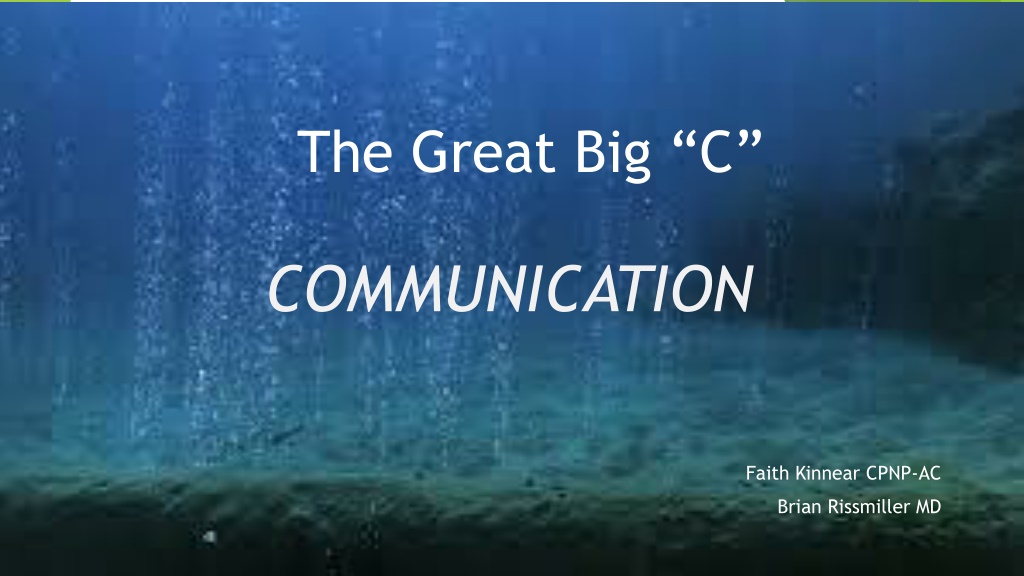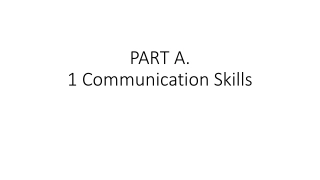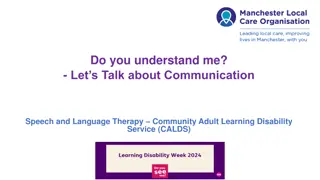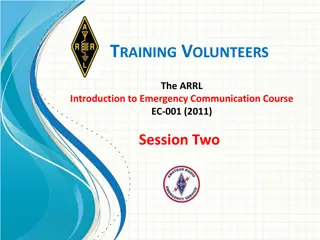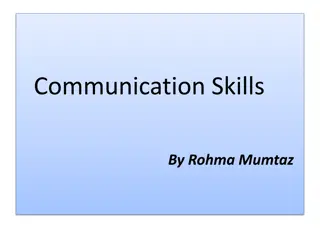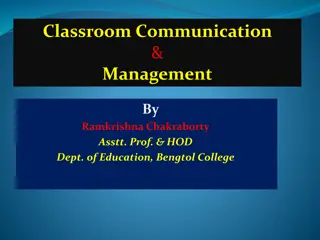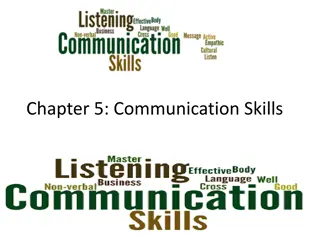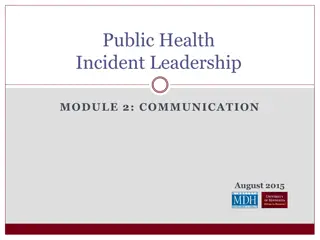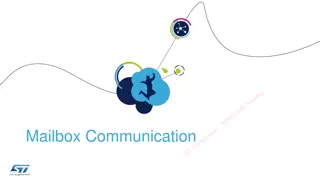Understanding Communication: Types, Importance, and Impact
Explore the various aspects of communication including types such as verbal, non-verbal, and written/visual, importance of standardized communication, and the impact of communication on daily interactions. Dive into the ways we communicate, challenges faced, and why effective communication matters in our personal and professional lives.
Download Presentation

Please find below an Image/Link to download the presentation.
The content on the website is provided AS IS for your information and personal use only. It may not be sold, licensed, or shared on other websites without obtaining consent from the author. Download presentation by click this link. If you encounter any issues during the download, it is possible that the publisher has removed the file from their server.
E N D
Presentation Transcript
The Great Big C COMMUNICATION Faith Kinnear CPNP-AC Brian Rissmiller MD
Objectives: Define 3 types of communication Explain importance of standardized communication Practice multiple handoffs
Good or Bad ? https://media.giphy.com/media/3o7TKAWRHYdIl4SjpS/g iphy-downsized.gif https://www.youtube.com/watch?v=Z59AnkxekfI https://www.youtube.com/watch?v=Jt0MYij66jM
Communication: 1 a : a process by which information is exchanged between individuals through a common system of symbols, signs, or behavior the function of pheromones in insect communication; also : exchange of information b : personal rapport a lack of communication between old and young persons 2 a : information communicated : information transmitted or conveyed b : a verbal or written message The captain received an important communication. 3 communications plural a : a system (as of telephones or computers) for transmitting or exchanging information wireless electronic communications b : a system of routes for moving troops, supplies, and vehicles c : personnel engaged in communicating : personnel engaged in transmitting or exchanging information 4 communications plural in form but singular or plural in construction a : a technique for expressing ideas effectively (as in speech) b : the technology of the transmission of information (as by print or telecommunication) 5 : an act or instance of transmitting the communication of disease 6 anatomy : a connection between bodily parts https://www.merriam-webster.com/dictionary/communication
Types of Communication: Verbal Non-Verbal Written/Visual
Lets take a poll: Q1: Do you spend more time: texting, emailing or talking to people face to face Q2: How often do you experience frustration related to communication at work Never Sometimes Often Every shift Q3: Have you left a job because you felt like communication was poor Yes No Q4: What do you perceive to be the biggest barrier in daily communication Free Text
Why it matters We do it all day every day verbal, text, email, waving, hugging, nodding Negativity Bias We are wired to respond stronger to negative input than positive ones- Dr Rick Hanson
Attrition & Communication Transparency Frustration Value Satisfaction
Statistics 1744 deaths in 5 years due to communication errors 1.7 billion dollar cost 80% serious medical errors happened when transferring patients due to miscommunication 27%-37% of malpractice cases due to miscommunication in 4 years Between providers, between providers and families and technology Standardized handoff reduced preventable errors by almost 50% 44% inpatient, 48% ambulatory, and 8% ER. Almost 50/50 in breakdown between providers and between providers and patients
Potential Barriers to Effective Communication I m uncomfortable I don t know you I have different beliefs, morals or ethical views from you What if I m wrong If I say or do the wrong thing will I be punished
Overcoming Barriers Get to know them Educational seminars Specialized training Badge cards Simulation Standardized process
Examples of Standardized Mnemonics SBAR +/- Q Daily communication SPIKES Helpful for breaking bad news CUS I have a Concern, I m Uncomfortable, Safety NURSE Tool for responding to emotion IPASS Early studies on usefulness in critical patient care areas
+/- Q Questions
CUS CONCERN I am concerned that the respiratory rate has gone up by 10 UNCOMFORTABLE I am uncomfortable with the amount of urine the patient has had this shift SAFETY I am worried that the patient would be safer in the ICU due to his rapidly worsening respiratory distress
SPIKES Setting: Is it a private area? Sitting? Perception: How sick is the patient? Invitation: What do you want to know? How much? Knowledge: Share what you know, simply in a way they can understand Emotions: Let family show emotions, be present Strategy/Summary: Make a plan for next meeting, plan of action, etc
Provider to provider handoff I-PASS Between teams Shift handoff PHM to ICU ICU/PHM to OR ER to ICU/PHM http://www.ponderingem.com/journal-club/pondering-em-journal-club-changes-in/
